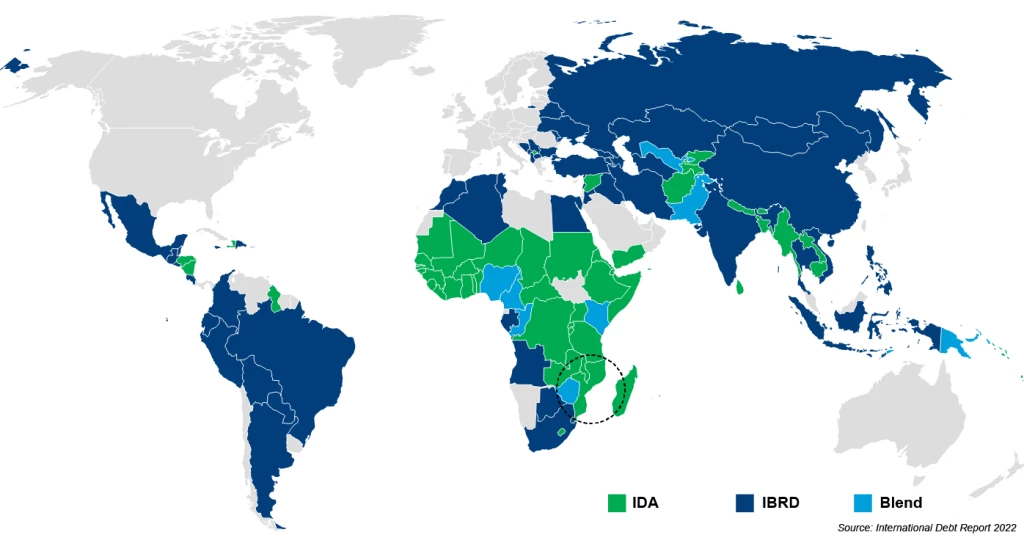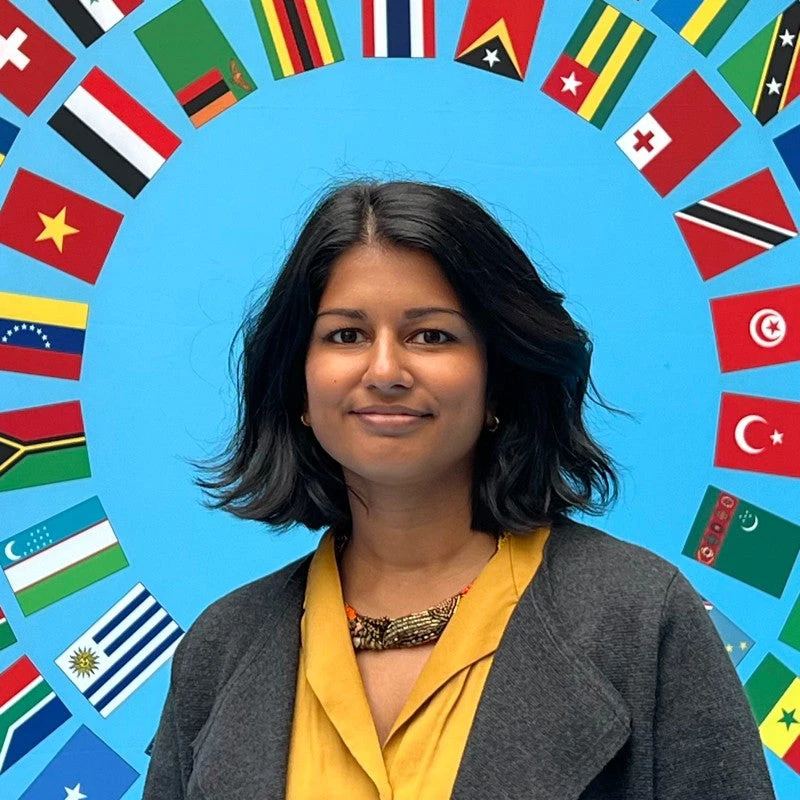
Much has been written about the looming debt crisis in low- and middle-income countries. A series of global shocks and a worsening climate crisis have created an unprecedented challenge for many of these countries and the global community. In 2021, countries that receive support from the World Bank’s International Development Association (IDA) owed nearly $1 trillion, with 61 percent of them either in debt distress or at high risk of debt distress.
While the World Bank is committed to helping countries strengthen their debt management and providing financial assistance, effectively delivering that support requires accurate data and greater debt transparency.
Since 1951, the Bank has required borrowing countries to provide detailed information on long-term external debt owed by a public agency or private agency with a public guarantee (at a loan-by-loan level) and long-term external debt owed by the private sector with no public guarantee (in aggregate). Countries are required to undertake comprehensive debt reporting via the World Bank's Debtor Reporting System (DRS). DRS data is essential to the World Bank's analytical and operational work. Today, the World Bank's Sustainable Development Finance Policy (SDFP) incentivizes this requirement.
Figure 1: 61% of IDA borrowing countries are either in debt distress or at high risk of debt distress
Challenges
Yet, some of the 120+ low- and middle-income countries that participate in the DRS face challenges in accurately collecting and reporting their debt data. Mozambique is no exception. Some common challenges include missing loans and transactions, imbalances stretched over the years, and inconsistent communications. A myriad of obstacles could affect their data coverage or quality, including a lack of legal mandates or technical capacity, changes in reporting authorities, and issues related to debt management systems, to name a few. However, helping the authorities overcome these obstacles is all the more difficult when it takes place between continents or time zones and relies on a never-ending series of emails.
Figure 2: Map of DRS Reporting Countries and Their Operational Lending Categories
Working Together
The World Bank has a solution for that. It's called a Technical Assistance (TA) mission. It allows World Bank staff from headquarters and the Country Office to work side-by-side with government officials to improve their databases, reporting, and understanding of DRS methodology. This can help resolve issues and overcome challenges in obtaining the best possible data.
Parul Agarwal, a Statistical Analyst on the Debt Data Team in the World Bank’s Development Data Group, recently undertook a TA mission to Mozambique. The mission was a collaborative partnership between several teams at the World Bank, including the Development Economics Vice Presidency, the Macroeconomics, Trade, and Investment Global Practice (MTI), and the Development Finance Vice Presidency. It leveraged MTI's country presence and Mozambique's commitment this fiscal year under the SDFP to report "error-free" DRS data to strengthen debt transparency.
Following years of virtual correspondence that attempted to resolve debt data issues from more than 8,000 miles away in the United States, this past April, Parul was able to travel to Mozambique's capital, Maputo, to work together with the MTI country team and the Ministry of Economy and Finance's Debt Office. During the mission, our team worked directly with the Debt Office comparing our loan-level databases to validate the data, address data gaps, and reconcile any persisting issues.
Impact

Our joint efforts during this mission made significant improvements in Mozambique's DRS reporting. Data inconsistencies between the DRS and the government's debt management system were successfully resolved, ensuring more accurate and reliable reporting in the future and helping us identify future areas for improvement and expanded coverage. In-person TA missions are valuable in enhancing debt transparency and data reporting quality.
Of course, in addition to tackling debt reporting problems, TA missions have a delightful benefit: interacting and getting to know our counterparts in person. During Parul's time in Mozambique, the staff of the Debt Office were extremely gracious hosts. The last day of the mission was the day before Mozambique's National Women's Day, commemorating Josina Muthemba Machel's activism for women's rights and Mozambique's independence. To celebrate, the female staff brought and tied matching capulanas – colorful pieces of waxed fabric that can be used as a skirt, dress, or headdress – including one for Parul!
Working in person with the dedicated professionals at Mozambique's Debt Office allowed us to share knowledge, forge personal connections, and foster a deeper understanding of their challenges, goals, and expertise, thus strengthening the working relationship and building a solid foundation for future collaborations.
By strengthening debt transparency through TA missions, the World Bank can help countries like Mozambique accurately manage their debt and pave the way for sustainable development and economic growth.
We would like to acknowledge the contributions of Jason Kamweru and Zehra Aslam in this Technical Assistance program.





Join the Conversation